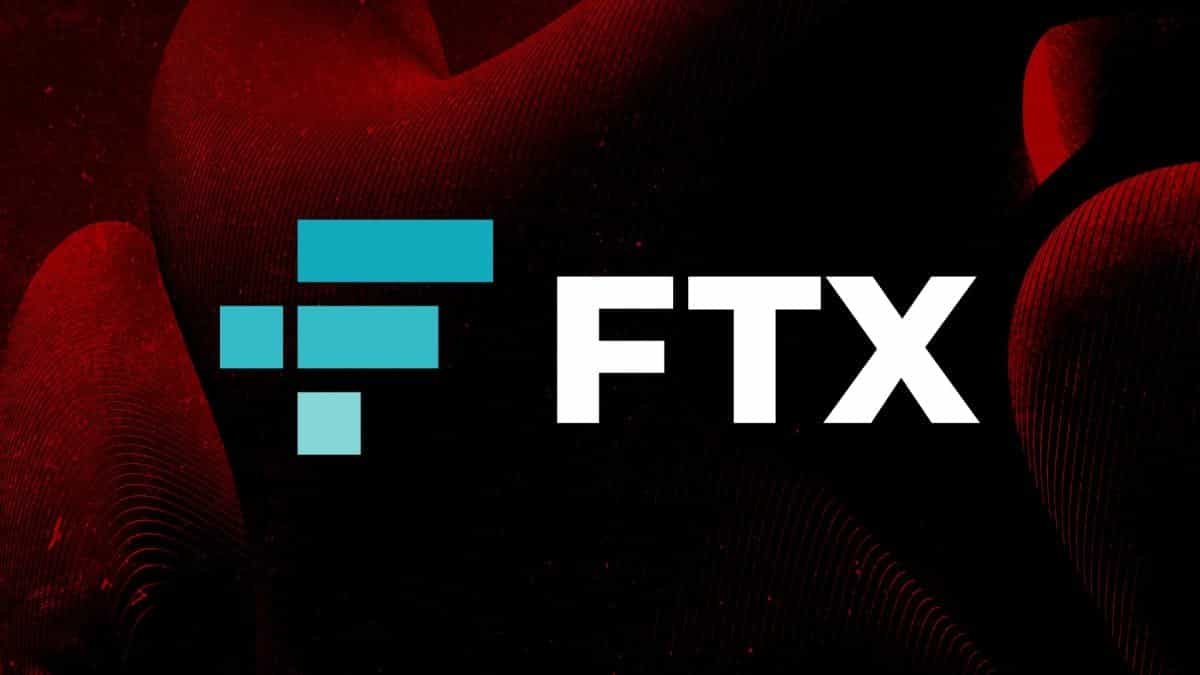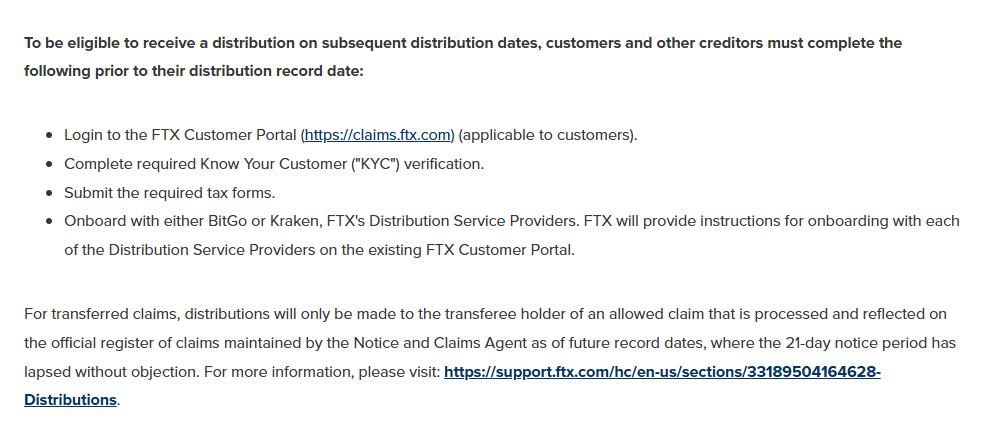On May 30, 2025, the $5 billion distribution from FTX will commence.
Written by: Oliver, Mars Finance

In November 2022, the collapse of FTX was like an earthquake in the crypto industry, with billions of dollars in customer funds evaporating and founder Sam Bankman-Fried's fraud scandal shocking the world. However, three years later, on May 30, 2025, FTX Trading Ltd. is about to enter the second phase of its bankruptcy restructuring, with over $5 billion in funds set to be distributed to creditors through BitGo and Kraken. Even more exciting is that this massive amount of money is almost certain to be distributed entirely in the form of US dollars and stablecoins, excluding volatile crypto assets like Bitcoin and Solana. This means that the market may see a wave of potential buying rather than the shadow of selling pressure. How will this release of funds ignite the next wave of enthusiasm in the crypto market?
US Dollars and Stablecoins: The "Fuel" for Buying
FTX's bankruptcy management team can be seen as "alchemists" in a crisis. From high-return investments in Anthropic to the astonishing rebound of Solana tokens, they have consolidated a previously fragmented asset pool into a massive fund valued at approximately $16.5 billion. The $5 billion distribution in the second phase is the latest crystallization of this effort. However, unlike traditional bankruptcy liquidations, the form of these funds brings new possibilities to the market.
According to authoritative media reports from CoinDesk and CryptoSlate, the $5 billion distribution will primarily be in the form of US dollars and stablecoins (USDT and USDC). The US dollars will be transferred via bank transfers or directly deposited into the accounts of Kraken and BitGo, providing creditors with a stable store of value, suitable for those looking to cash out quickly or avoid market volatility. Meanwhile, the introduction of stablecoins adds flexibility to the funds. An SEC filing in August 2024 explicitly classified "dollar-pegged stablecoins" as cash equivalents, allowing creditors to receive USDT or USDC through crypto wallets, facilitating quick trading in the crypto market. A user on the X platform even predicted that the influx of stablecoins could "trigger a massive surge."

More importantly, there is currently no evidence that the distribution includes volatile crypto assets like Bitcoin, Solana, or Ethereum. The Solana tokens (SOL) held by FTX were worth only $10 at their low in 2022 but have now soared to $150-200, yet most of these assets have been converted into US dollars or stablecoins. Directly distributing crypto assets would not only spark valuation disputes (e.g., whether to calculate at the price at the time of bankruptcy) but could also be hindered by SEC regulatory pressure. In September 2024, the SEC warned FTX against paying creditors with crypto assets, reinforcing the priority of US dollars and stablecoins. Additionally, FTX's financial advisor Steve Coverick stated in court that purchasing large amounts of crypto assets to repay in "original currency" would be "extremely expensive," further ruling out this possibility.
The combination of US dollars and stablecoins acts like a "fuel" injected into the crypto market. Unlike the selling pressure that volatile crypto assets might trigger, this fund provides creditors with flexible options: holding cash, converting to fiat currency, or directly purchasing assets like Bitcoin and Solana. This flexibility transforms the $5 billion from a potential source of selling pressure into a catalyst for market buying.
Buying Potential: Igniting the Spark in the Market
The scale of $5 billion should not be underestimated in the crypto market. In May 2025, the total market capitalization of the global crypto market is approximately $2.5-3 trillion, meaning this fund represents about 2% of the total market value. If 50% of it (around $2.5 billion) flows into mainstream tokens, it could significantly drive up prices. Solana is particularly noteworthy. FTX has historically been closely associated with it, and its asset pool once had a significant proportion of SOL. Some creditors may choose to invest in SOL due to their familiarity with it, driving up its price. Traders on the X platform have already begun to bet on this possibility, stating that "Solana may see a surge."
The initial $1.2 billion distribution in early 2025 provided us with a glimpse of the clues. At that time, Alvin Kan, COO of Bitget Wallet, observed that some creditors reinvested their funds into the crypto market, boosting the valuations of Bitcoin and Solana. The $5 billion scale in the second phase is larger and may have a more profound impact. Especially in the current market environment, the crypto industry is slowly recovering from the low point in early 2025 (when Bitcoin fell to $78,273), and the influx of FTX's funds could become the spark that ignites market confidence. More importantly, the orderly resolution of the FTX bankruptcy case may provide a psychological boost. The collapse in 2022 exposed the vulnerabilities of centralized exchanges and shook investor trust. Now, FTX's successful recovery and distribution of funds demonstrate the industry's resilience in a crisis. This positive sentiment may attract more external funds into the crypto market, further amplifying the buying effect.
Phased Distribution: Sustained Momentum
The $5 billion distribution from FTX will not be completed in one go but will adopt a phased strategy to ensure a smooth market transition. Starting from May 30, 2025, convenience creditors (claims under $50,000) will be prioritized to receive funds, with the first batch expected to cover about $1.2 billion. Large creditors (claims over $50,000) may be delayed until the second quarter of 2025 or even later, with the entire distribution process potentially lasting several months.
This phased release provides the market with sustained buying momentum. A one-time injection of $5 billion could trigger short-term volatility, while phased distribution allows funds to flow in gradually, reducing market impact. The participation of Kraken and BitGo further enhances the reliability of the distribution. Kraken even offers transaction fee discounts to creditors, encouraging them to keep their funds within the crypto ecosystem and increasing the likelihood of reinvestment.
However, the distribution is not without challenges. Creditors must complete KYC (Know Your Customer) verification and submit tax forms, and in some regions (such as New York and Washington), distribution may be delayed due to platform operational restrictions. As of April 2025, nearly 392,000 creditors face the risk of $2.55 billion in claims being canceled due to incomplete KYC, highlighting the complexity of compliance. These obstacles may slow the pace of funds flowing into the market but will not change their nature as buying power.
Industry Insights: From Crisis to Opportunity
The $5 billion distribution from FTX is not only a victory for creditors but also brings profound insights to the crypto industry. The use of US dollars and stablecoins highlights the importance of stable assets in a crisis. USDT and USDC, as digital alternatives to the US dollar, not only simplify the distribution process but may also promote the further mainstreaming of stablecoins in payments, cross-border transactions, and other areas. However, the SEC's regulatory stance on stablecoins (viewing them as potential "crypto asset securities") reminds us that compliance remains a key constraint on industry development.
Moreover, FTX's successful restructuring provides a template for other bankruptcy cases (such as Celsius or Voyager). The experiences of phased distribution, asset liquidation, and regulatory communication may become standard practices for the industry in responding to similar crises. At the same time, the resolution of the FTX incident may accelerate the adoption of decentralized finance (DeFi) and self-custody wallets, prompting investors to rethink their reliance on centralized platforms.
Conclusion
On May 30, 2025, the $5 billion distribution from FTX will commence. This fund, composed entirely of US dollars and stablecoins, not only marks a phased victory in the FTX bankruptcy case but may also serve as a catalyst for the recovery of the crypto market. From potential selling pressure to the spark of buying, this release of funds injects new hope into the market. As a user on the X platform stated, "The final chapter of FTX has yet to be written, but it has already changed our view of the crypto world." In this journey of rebirth from the ashes, the ripples of $5 billion may ignite the next spring for the crypto market.
免责声明:本文章仅代表作者个人观点,不代表本平台的立场和观点。本文章仅供信息分享,不构成对任何人的任何投资建议。用户与作者之间的任何争议,与本平台无关。如网页中刊载的文章或图片涉及侵权,请提供相关的权利证明和身份证明发送邮件到support@aicoin.com,本平台相关工作人员将会进行核查。




